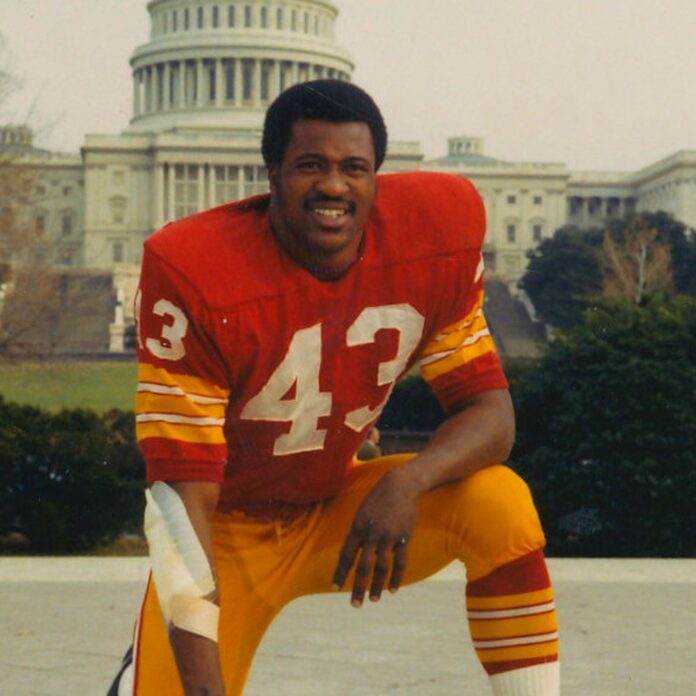Richard Shank
Columnist
In these early days of August, it is hard not to think of football at all levels as another season is soon to start.
My old alma mater, Kansas State, is primed to start the season across the pond in Dublin, Ireland, again perennial rival Iowa State. It is a must win for Kansas State to start a season with a team picked to compete for bragging rights in the Big 12 Conference.
The other day I caught myself thinking of my college years watching games in K-State’s Memorial Stadium before the move in 1968 to what is now the Bill Snyder Family Stadium.
Watching my first K-State game with Kansas University was what could now be called a laugher. On October 29, 1966 the Jayhawks arrive in Manhattan with a 2-4-0 record to play the winless Wildcats featuring an 0-6-0 record. Broadcasters dubbed the game the “loser’s bowl.” One even went so far to call the game the “toilet bowl.”
The most prophetic broadcaster whose name escapes me said the teams were so far down that the game could end in a tied, which it did with a 3-3 score. Soon, both teams bid their coaches farewell.
Three years later, K-State’s football fortunes were on the rise thanks to Coach Vince Gibson who arrived in town with a southern drawl and proclaimed, “we gonna win because we have good kids.” “And, we ain’t going to be embarrassed,” Gibson promised.
On October 25, 1969, the 11th ranked Oklahoma Sooners came calling and were unexpectedly thumped 59-21, thanks in part to 380 yards passing from Junior Quarterback Lynn Dickey. Dev Nelson, the legendary voice of K-State from that era was announcing the game yelling into the microphone “Dickey, Dickey, back, back” as the Osawatomie native performed his magic setting a new Big 8 record for passing.
Bud Wilkinson, Oklahoma’s former Coach, was broadcasting that day for CBS Sports, and when handed the K-State/Oklahoma score, he turned to a staff person and said, “somebody check that score” signifying he could not believe what had just happened.
A harsh three-year penalty was levied against K-State in 1970, which stopped K-State’s rise in the football world. I always wondered how perennial football powers seem to escape NCAA penalties and probation, but that seems to be the norm.
In 1988, the offensive coordinator from Iowa University was hired to coach Kansas State which was the start of a Hall of Fame career. Today, Coach Chris Kleiman continues that tradition as he starts his seventh year as the K-State skipper.
This past Saturday, Larry Brown, a K-State running back from the 1960s was inducted into the Kansas Sports Hall of Fame in a ceremony held in Topeka. Brown was a year ahead of me at Kansas State and his story is one worth repeating.
As the story is told, Brown graduated from high school in the Pittsburg, Pennsylvania area where he was a standout player. Still, he was short on offers to continue football. Finally, the coach at Dodge City, Kansas Community College made him a scholarship offer, contingent on him making the team as a walk-on player.
Soon, he was halfway across the nation in Dodge City where he, as a blocking back, not only made the team but earned honorable mention All-American status during his sophomore year.
Gibson was amassing some great recruits including Dickey, and was anxious to make Brown a Wildcat, an offer he accepted.
During the 1967 season, Brown was a blocking back and a year later elevated to a running back where he ran for 406 yards on a 4-6-0 team, which then was a respectable season for Kansas State.
Legendary Coach Vince Lombardi, who earlier retired from coaching at Green Bay, returned to the sidelines with what is now the Washington Commanders. During the eighth round of the 1969 NFL draft, Lombardi selected Brown as the 191st pick.
Lombardi knew Brown was something special, but noticed he was often late getting into action following the snap of the football. Lombardi ordered hearing tests for Brown which confirmed he had a hearing impairment in one ear. With a hearing aid built into his helmet, that problem was solved but the coach had one more issue to solve. Brown had a propensity to fumble the football, so Lombardi had a solution for that too. Lombardi required Brown to always carry a football with him. People who met Brown on the street probably wondered why he was always walking with a football in hand.
With that being done, Brown ran for 888 yards in a 14-game season and was second in the voting for Rookie of the Year, and then was selected to play in his first of four Pro-Bowls.
Lombardi died of cancer before the start of the 1970 season and Brown lost his football mentor, but his greatness as a professional running back was just beginning.
In 1972, Brown was named the NFL’s Most Valuable Player and led the league in rushing with 1,216 yards.
In a career that spanned eight years, Brown rushed for 5,800 yards, caught 238 passes for 2,485 yards, and scored 55 touchdowns. Injuries shortened his career and he retired in 1976.
After retirement, Brown had business careers with E.F. Hutton and Xerox.
Following his rookie year in pro-football, Brown returned to Kansas State to deliver a commencement address to students. A packed house was in McCain Auditorium that day to hear Brown’s presentation.
Brown chuckled as he told the story how his coach in college admonished him to make certain he finished his degree as he was not cut out to play pro football.
Brown seemed proud that he had defied the odds, and that he should be.




